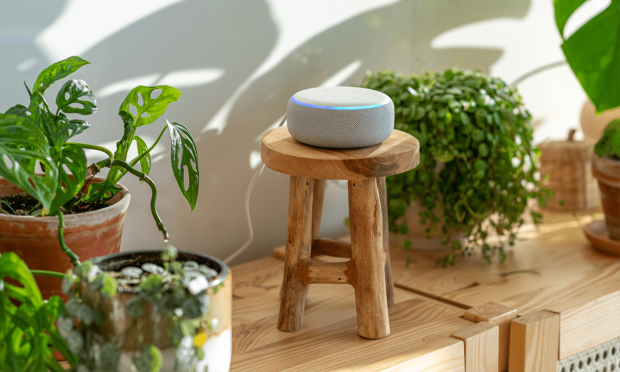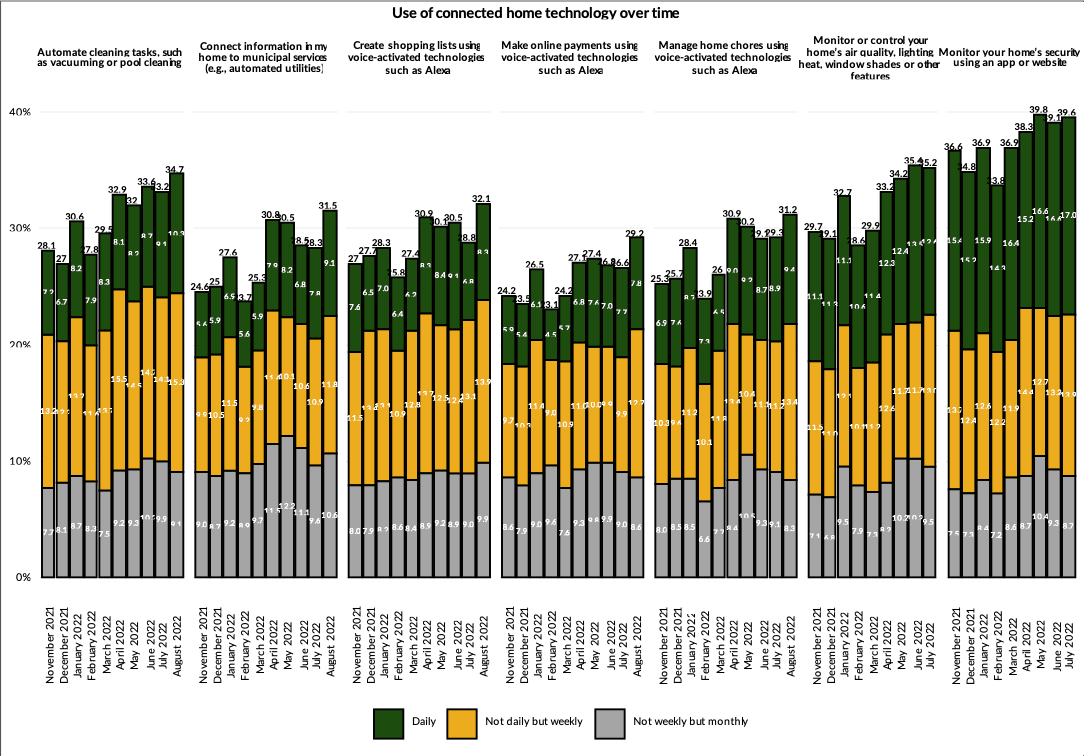Amazon, Google Hear Consumers, Crank Up Volume of Voice Commerce Touchpoints

The chorus supporting expansion of voice commerce and smart home applications has gotten considerably louder in 2022 as Amazon specifically brings Alexa deeper into connecting consumers with sellers via an ongoing introduction of new tools and capabilities.
At its annual Amazon Accelerate conference for independent sellers on the platform on Sept. 14 and 15, the company unveiled a slew of new sellers’ tools as part of its Buy With Prime initiative begun earlier this year, and upgrades to Alexa skills were very much in the spotlight.
Coming out of the gate on day one, Amazon announced a new Alexa skill enabling the system to answer product queries with ads connecting consumers with independent seller pages.
“When customers pose questions to Alexa, including queries related to a product’s features or compatibilities, Alexa responds with helpful answers provided by brands from those product categories,” according to a recent company announcement that detailed the new “Customers Ask Alexa” feature.
At the same time, Amazon also debuted a range of new voice-powered commerce features for the kickoff of its Thursday Night NFL game coverage, which aims to make Alexa an integral part of the football viewing experience while also monetizing it.
It’s a bid to drive more voice search consumers to the stores of Amazon’s two million third-party sellers that account for more than half of its sales today.
The new Customers ask Alexa features will first be available in October as an invite-only program in Amazon Seller Central for a “select group of brands” before ramping up to all eligible brands in the U.S. in 2023.
Customers ask Alexa is also slated to be added to the Amazon search bar in late 2022 and via Echo devices in mid-2023, the eCommerce giant said.
“Amazon recognizes brands as experts on their products. With this new capability, we have made it easier for brands to connect with customers to help answer common questions and better inform their purchase decisions,” said Rajiv Mehta, general manager of Alexa Shopping at Amazon.
See also: Amazon Rolls Out Red Carpet for Sellers With Buy With Prime, Alexa Upgrades
To be sure, last week’s tweaks did not happen in isolation, as it’s been a year of gains for voice commerce and voice interaction overall. Forthcoming PYMNTS research finds that the share of consumers engaging with connected home tech, including voice assistants like Alexa and Google Echo, has remained on an upward trajectory during the past 9 months, as consumers use their voice assistants to search for more products in more places than ever.

Voice Making Itself Heard More
According to PYMNTS data, the biggest gains in voice assistant usage this year have been concentrated in areas like monitoring home security systems and controlling automated home electronics like vacuum cleaners or streaming TV.
However, growing numbers of consumers are using smart voice assistants for commerce and payments activities. For example, as the chart shows, nearly 30% used a voice assistant to make a payment in August 2022, while roughly 8% did some form of voice transaction every day.
Additionally, in August, over 30% of consumers we surveyed had created shopping lists using voice assistants, again with about 8% doing this as a daily activity.
Hardly alone among the Big Tech players that are currently expanding use cases for voice assistants, at the Google I/O developer conference in the second quarter, Google talked up its own initiatives to grow voice commerce that centered on its Nest-connected home system, which is also being equipped and upgraded with new functionalities.
See also: The Data Point: 32% of Consumers Right at Home With Digital, Voice Controls
In a July blog post, Google said “At Google I/O 2022, we announced Look and Talk, a major development in our journey to create natural and intuitive ways to interact with Google Assistant-powered home devices. This is the first multimodal, on-device Assistant feature that simultaneously analyzes audio, video, and text to determine when you are speaking to your Nest Hub Max.”
Google says the Nest Max Hub algorithm “can differentiate intentional interactions from passing glances in order to accurately identify a user’s intent to engage with Assistant. Once within 5ft of the device, the user may simply look at the screen and talk to start interacting with the Assistant.”
For all PYMNTS Retail coverage, subscribe to the daily Retail Newsletter.
